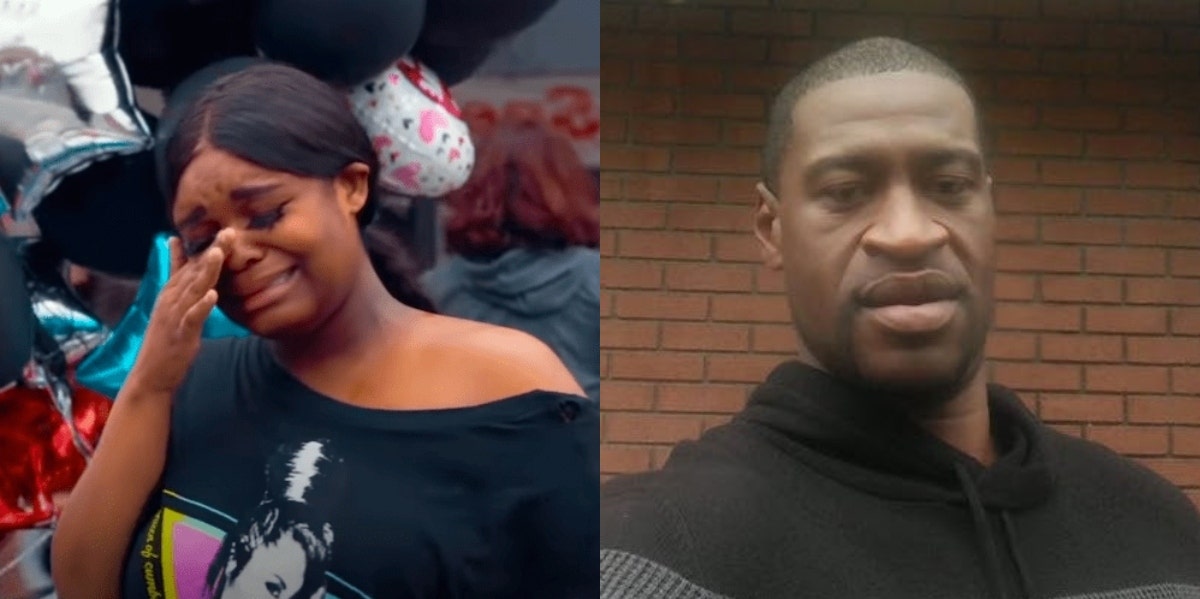Darnella Frazier, Thank You For Bringing Derek Chauvin To Justice For The Murder Of George Floyd
Without her video, things could have been very different.
 YouTube
YouTube As we celebrate a new victory in the push for racial justice with a guilty verdict in the trial against Derek Chauvin, many are acknowledging the efforts of one teenager who shaped the course of recent history.
If not for Darnella Frazier, who used her camera phone to record Derek Chauvin murdering George Floyd on May 29, 2020 in Minneapolis, as well as the group of brave bystanders who stepped up, Chauvin could be one of the many police officers who remain in the force after an unjust killing.
With or without the video, Chauvin is a murderer, but because of one quick-thinking teen, we have one less criminal cop on our streets, and a defining movement towards police reform that includes people of every race and spans cultures and continents.
And though a guilty verdict does not justify or amend Floyd’s death, this watershed trial may pave the way for more racial equity in policing.
Frazier was just 17 years old when she stumbled upon Floyd’s arrest in Minneapolis.
After recording and uploading the video to Facebook, she set the stage for international protests against racism and police brutality.
Footage of Floyd begging for his life under Chauvin’s knee became symbolic of countless other Black lives oppressed and lost in centuries of systemic racism.
"With nothing more than a cell phone and sheer guts, Darnella changed the course of history in this country, sparking a bold movement demanding an end to systemic anti-Black racism and violence at the hands of police," wrote Suzanne Nossel, CEO of PEN America
Frazier prevented the police from covering up Floyd’s death
Frazier’s footage upended an entire narrative manufactured by the Minneapolis Police Department. If their story had been allowed to stand, it could have led to a very different outcome for Chauvin.
The department’s original account of Floyd’s death describes the scene of a “medical incident” in which police transferred a man to a hospital “where he died a short time later.”
In court, however, pulmonologist Dr. Martin Tobin used video footage to identify the exact moment that Floyd took his final breath whilst still under Chauvin’s knee.
Frazier’s video and the narrative it shattered are a reminder of the potential coverup that could have been used to protect Chauvin.
It is also a reminder of the thousands of other Black lives that are taken by police officers but not recorded. We may never know how many police officers have committed similar atrocities yet remain on the streets.
The viral video of George Floyd's murder spurred the world into action
With Frazier’s video as the catalyst, more action was taken against Chauvin within 24 hours than most other officers who kill people face in their lifetimes.
Minneapolis Police Chief Medaria Arradondo witnessed Frazier’s video after it had gone viral on Facebook and fired Chauvin and the three other officers involved in the arrest the next day.
He has publicly praised Frazier for recording the video that spurred him to action.
While “We should never have to rely upon” witness video to keep police accountable, the chief said, “I am thankful, absolutely, that this was captured in the manner that it was.”
The video and the disturbing truths it revealed became impossible to ignore or attempt to rationalize. Thus, it penetrated the culture of police officers defending their own after despicable acts and it forced Arradondo to acknowledge Chauvin’s crimes.
Since the video, Minneapolis has shifted almost $8 million of police funding into expanding mental health services, violence prevention, and other supports.
Cities across the U.S. have reviewed police policies on the use of force, body cams, and warrants.
Darnella Frazier's video was defining evidence in the Chauvin trial
Court evidence and witness statements returned to the footage of Floyd’s death time and time again. Analyzing Chauvin’s level of force, Floyd’s calls for help, and the efforts of other bystanders to save his life.
Attorney General Keith Ellison’s successful plea to the jury to “believe your eyes,” would not have been possible if not for Frazier’s video.
Frazier, herself, provided one of the most compelling and emotional testimonies in the case and reminded us of the humanity Chauvin lacked on that fateful day.
“It’s been nights I stayed up apologizing and apologizing to George Floyd for not doing more and not physically interacting and not saving his life,” Frazier said,
She also restated the reality that Floyd is just one of many Black men whose lives are threatened by police every day.
“When I look at George Floyd, I look at my dad, I look at my brothers, I look at my cousins, my uncles because they’re all Black,” Ms. Frazier said. “I have a Black father. I have a Black brother. I have Black friends.
She added: “I look at how that could have been one of them.”
Frazier and the other bystanders who recorded and testified against Chauvin turned what could have been another covered-up murder of a Black man into what will hopefully be a turning point toward police reform and racial equality.
As Ellison put it while praising their efforts, “They performed simple, yet profound, acts of courage. They told the truth.”
Alice Kelly is a writer living in Brooklyn, New York. Catch her covering all things social justice, news, and entertainment. Keep up with her Twitter for more.

